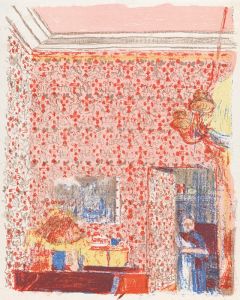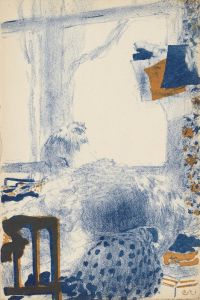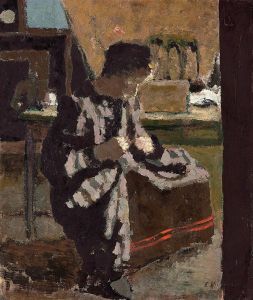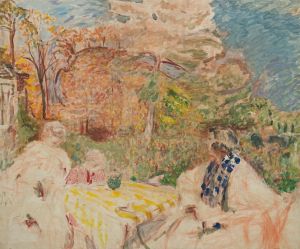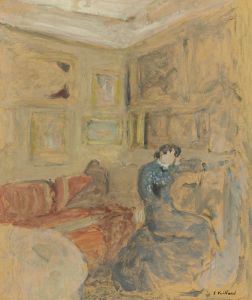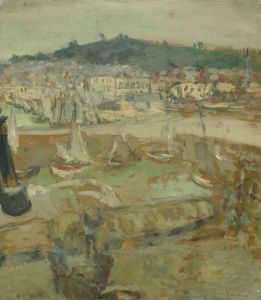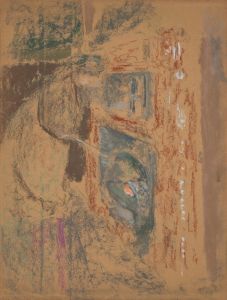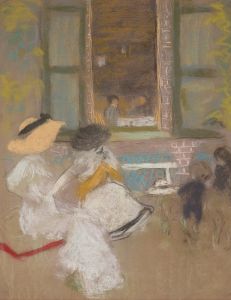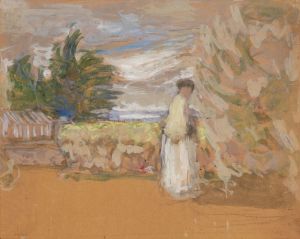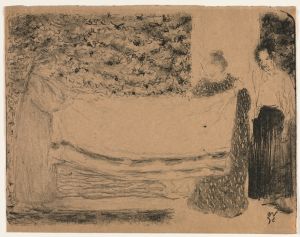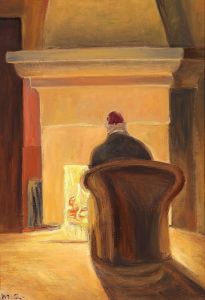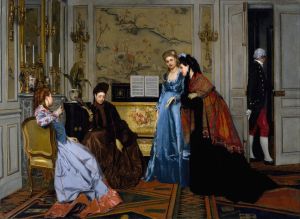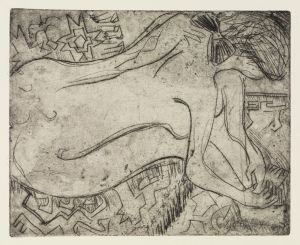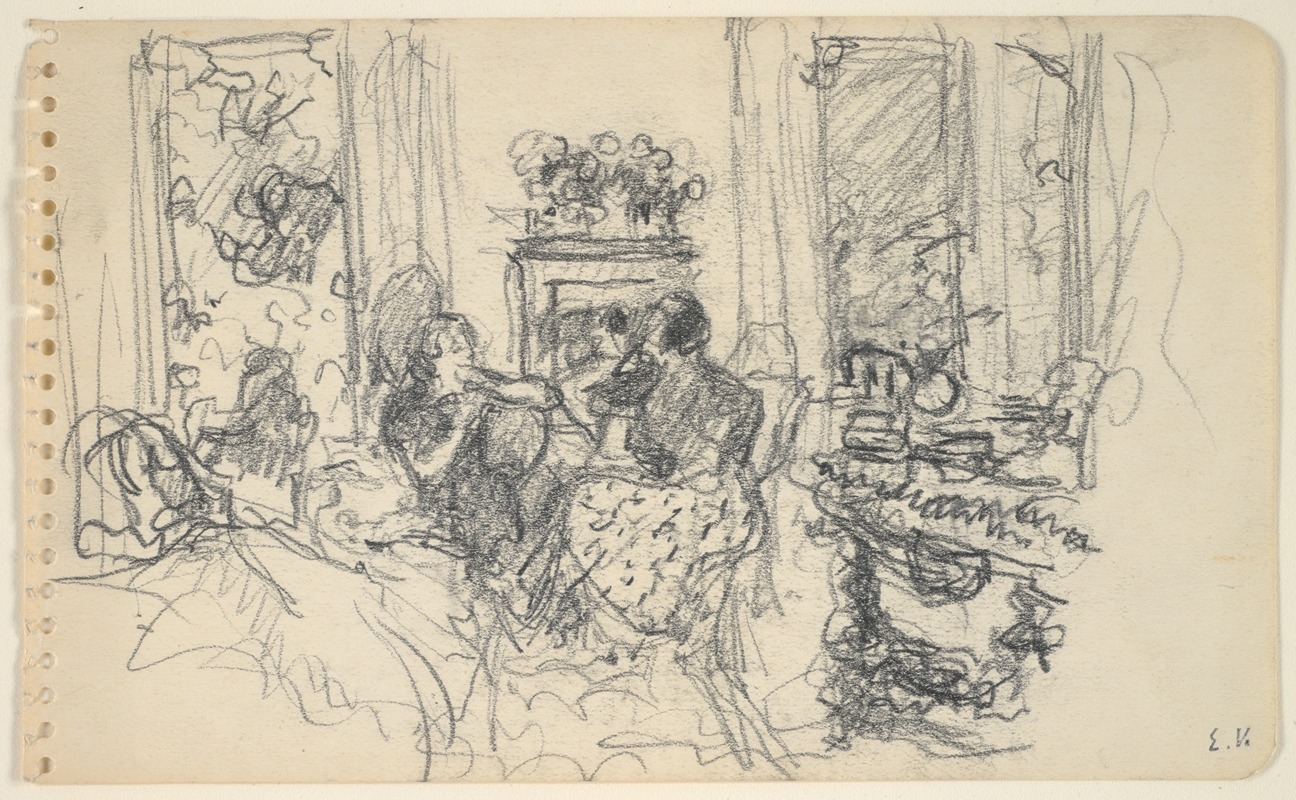
Women Conversing in a Salon with Open Windows and a Fireplace
A hand-painted replica of Édouard Vuillard’s masterpiece Women Conversing in a Salon with Open Windows and a Fireplace, meticulously crafted by professional artists to capture the true essence of the original. Each piece is created with museum-quality canvas and rare mineral pigments, carefully painted by experienced artists with delicate brushstrokes and rich, layered colors to perfectly recreate the texture of the original artwork. Unlike machine-printed reproductions, this hand-painted version brings the painting to life, infused with the artist’s emotions and skill in every stroke. Whether for personal collection or home decoration, it instantly elevates the artistic atmosphere of any space.
Édouard Vuillard, a prominent French painter associated with the Nabi movement, created the painting "Women Conversing in a Salon with Open Windows and a Fireplace" in the late 19th or early 20th century. Vuillard is well-known for his intimate domestic interiors and his ability to capture the subtleties of everyday life. This particular work exemplifies his skill in portraying the nuanced interactions and the ambiance of a domestic setting.
The painting depicts a group of women engaged in conversation within a salon, a common social space in French homes during this period. The setting is characterized by its open windows and a fireplace, elements that contribute to the warm and inviting atmosphere of the scene. Vuillard's use of color and light is notable, as he often employed a muted palette to create a sense of intimacy and tranquility. The open windows suggest a connection between the interior space and the outside world, a recurring theme in Vuillard's work that reflects the interplay between private and public life.
Vuillard's technique often involved the use of distemper, a type of paint made by mixing pigments with a water-based binder, which allowed him to achieve a matte finish and subtle gradations of color. This technique is evident in "Women Conversing in a Salon with Open Windows and a Fireplace," where the textures and patterns of the women's clothing and the furnishings are rendered with delicate precision. The composition is carefully balanced, with the figures arranged in a way that guides the viewer's eye through the scene, creating a sense of depth and movement.
The painting is also a testament to Vuillard's interest in the social dynamics of the time. The salon was a significant cultural institution in France, serving as a space for intellectual and artistic exchange. By depicting women in this setting, Vuillard highlights their role in these cultural conversations, at a time when women's participation in public life was becoming increasingly prominent. The painting captures the essence of these interactions, focusing on the gestures and expressions of the women, which convey a sense of camaraderie and engagement.
Vuillard was influenced by the Symbolist movement and the work of his contemporaries, such as Pierre Bonnard and Maurice Denis. His association with the Nabis, a group of avant-garde artists, informed his approach to painting, emphasizing the decorative and symbolic aspects of art. This influence is evident in the way Vuillard integrates pattern and form in "Women Conversing in a Salon with Open Windows and a Fireplace," creating a harmonious composition that transcends mere representation.
The painting is part of Vuillard's broader oeuvre, which often explored themes of domesticity and the interplay between people and their environments. His work is celebrated for its ability to evoke the mood and atmosphere of a scene, capturing the quiet moments of everyday life with sensitivity and insight. "Women Conversing in a Salon with Open Windows and a Fireplace" is a quintessential example of Vuillard's artistry, showcasing his mastery of color, composition, and the depiction of intimate social spaces.
Vuillard's legacy as a painter lies in his ability to transform the ordinary into the extraordinary, offering viewers a glimpse into the private worlds of his subjects. His work continues to be appreciated for its aesthetic beauty and its profound exploration of human relationships and the spaces they inhabit.





